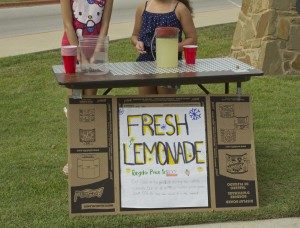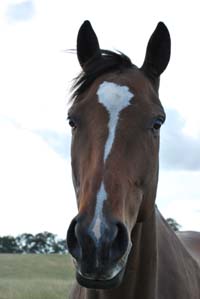Kids Making Money
 Most of my ancestors and relatives worked for someone else to make a living. So did I, in my main career as a Software Development Manager. Successful entrepreneurship was not demonstrated in my family, so I had no frame of reference to know that it was a normal activity. Yet making it big in one lifetime, like Bill Gates or Steve Jobs usually requires building a successful company.
Most of my ancestors and relatives worked for someone else to make a living. So did I, in my main career as a Software Development Manager. Successful entrepreneurship was not demonstrated in my family, so I had no frame of reference to know that it was a normal activity. Yet making it big in one lifetime, like Bill Gates or Steve Jobs usually requires building a successful company.
That is why I am trying to model and teach entrepreneurship to my grandchildren. I want them to know that they CAN, if they wish, pursue a business of their own.
To that end, this year in Grandma Rie’s Money Camp we are going to explore ways other kids are making money.
I recently heard of two young ladies with their own businesses whose stories I will be sharing at our 2015 Money Camp.
Jordan is just 15, yet has her own YouTube channel HowToByJorden with 100,000 subscribers. She started her channel at the tender age of 12, but was selling her first product at age 7 (Wish bracelets) and she also has a line of headbands and iPhone cases she sells online.
Her little sister makes and sells Wigglos Pets for kids who can’t have a live pet. She tried her first business at age 5!
Their father, Leon Scott Baxter, author of Secrets of Safety Net Parenting, was kind enough to let me quiz him on the details of how these girls came to start their own business at such young ages.
Knowing that kids don’t typically come up with the idea of going into business without someone letting them know it is possible, I asked As a parent, how did you encourage your daughters to start businesses?
“When I was a kid, we were dirt poor, so I started businesses out of necessity, to have money, some of which my mom would borrow. I learned early on how to market and sell and save. I instilled that entrepreneurial spirit in my girls early on.
I am also a 3rd grade teacher and we have a classroom economy where kids apply for class jobs, get a paycheck, pay rent for their desks, can buy their desks or even their friends’ and become landlords. They spend the money in the class store, at monthly auctions, and to pay for fines.
My book has a part dedicated to helping kids find their passions and to start to find success today, and not have to wait for tomorrow.”
Here is the rest of our interview.
How did Jordan get so many subscribers? Did she set out to get them, did you help, how did she let folks know that she has a channel and how does she let them know when there is a new video?
“She started her channel almost 3 years ago. She had a passion for being crafty as well as for film making. So, she set up an account and started posting. She was having fun and just kept adding more content. As she did, her videos and camera-presence got better. She watched other YouTubers, and asked if she could get a shed to put in the backyard as a studio. I thought she was crazy.
I think her first viral video was about making your hair look longer in 5 minutes. People started noticing her and her numbers started growing. Soon, management companies started asking to represent her. She chose one (with my help) and they coached her on how to optimize her channel and get even more subscribers. She has a regular posting schedule, so her subscribers know hen to expect her next video.”
“She didn’t start it to make money. She just loved what she was doing and it eventually brought her income that she reinvests into her videos, socks into mutual funds and buys stocks with.”
Some research on how to earn money on YouTube revealed that it can be incredibly difficult for most posters of videos. According to YouTube itself, you only get income for views of actual ads (not views of your video) and not all views count (like mobile phone views). Advertisers pay so much per 1000 views to YouTube. YouTube takes 45% from the gross amount generated by the ad views, and then you also may be paying for managers, production costs and more.
How long did it take before she started making money? How does it generate income for her? How do you handle the money (since she is still a minor)? Did you have to sign for her on You Tube agreements or anything else that required an adult? Is she willing to share a ball park of how much she makes on a yearly basis?
“Once she signed on with management she started generating income. Based on the ads that appear before videos and at the bottom of videos, and the numbers of clicks on them, she gets paid.
She has two bank accounts that also have my name on them. One is savings, and the other is for her taxes. I have to co-sign any contracts and am usually on all of her business calls. She is not comfortable sharing what she makes, but I can tell you it’s far more than I made her age working at Burger King. She has recently become very interested in investing (mutual funds, stocks and IRAs)”
How does she produce her videos? Is there a special room, what equipment does she use, where did she learn how to make the videos? Does she do all the work herself? How long does it take her from start to finish on a new video?
“Instead of getting a shed, she rearranged her room and set up a corner as her “studio”.
Since then, she shoots in different locales, including other parts of the house, in the backyard, on location, in the garage, at the beach, and etc.
She started with her own video camera, but as she improved her skills, her equipment was not keeping up, so she has since purchased new cams, lighting, editing software and computers.
She does all of the editing and shooting all herself. Each video is different. Some are faster than others.
What takes the longest is her editing. I don’t know exactly how long, but I know it can be hours and hours.”
What concerns as a parent do you have on her YouTube business and how do you address them?
“The biggest concern is privacy and keeping her safe as a pretty young lady. She has over 100,000 subscribers from all over the world with 10 million views of her 150 videos.
There have been a few contacts made from people we did not feel comfortable with. So, we try to keep her safe and use a PO Box and a different name.”
On the subject of her line of other products (headbands and iPhone cases) does she make them herself? Was there a special reason she chose pediatric brain cancer research to receive her donation of 25% of the profits from these products? Where does she sell the headbands? The iPhone cases?
“She makes all of her products in her spare time.
She chose to help Talia’s Legacy, because there was a young YouTuber who made beauty videos, named Talia. She had neuroblastoma and even without her hair, she continued to make videos, inspiring thousands. When she passed away, my daughter felt the loss and wanted to do something in her honor.
She sells these items on her website.”
How did Jordan think to start selling wish bracelets when she was just 7? How did you help her get started? Does she still sell them?
“She started selling the bracelets in grade school. When she was 7 she wanted to start a business, and she started by selling knitted bags, picture frames and jewelry.
The business morphed and she focused on the frames and different jewelry.
I was reading a book about The Universal Law of Attraction and shared the information with her. So, she decided to make “Wish Bracelets” to help the wearer draw their desires to them. They were a hit, but not a smash. She sold them for many years. She had a page on FaceBook. She rarely makes them any longer, but every now and then someone asks for one and she’ll make it.”
Little sister (now 11) makes Wigglo Pets, which are cute fuzzy little critters that wiggle when you pet them. I was curious about how an 8 year old came up with the idea.
How did she figure out how to make the product?
“Having an entrepreneurial older sister, my youngest was always looking for business opportunities. When she was 5 she started selling a product that was a very slow sell. When I was a kid, there was a toy similar to her product, and I remember making my own version as a kid. I told her about it. We made a prototype and asked friends what they thought, how to improve it, and price-points.”
“She started her own business at age eight, selling these Wigglo Pets. She’s sold over 1,500 to people on four different continents. She uses a portion of the money to donate to shelter animals and uses the rest to buy more supplies for her business, to invest in mutual funds, and in stocks like Disney and McDonalds.”
“Her first business was started when she was five. She sold these cute things called Wish Wands. They were wands with little colorful wooden things at the end (tiara, pirate chest, tiger) and ribbon coming off the end. Also it came with a spongy sticker. The idea was that you could make the wand magical using the power of eyelashes (have you ever made a wish on an eyelash?). You take a loose eyelash, adhere it to the sticker and attach it to the wand. And, voila, magic wand!”
Congratulations to these two girls and their Father on pursuing their entrepreneurial goals!
Need even more money making ideas? Check out the Penny Hoarder post on selling used books or my own journey to become a multi-millionaire in Choose Wealth! Be a Millionaire by Midlife.
Do your children have their own business? What do they sell?



